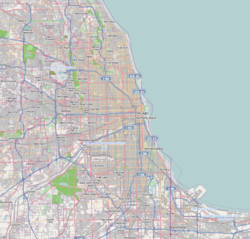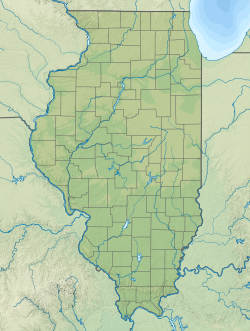
Bridgeview is a village in Cook County, Illinois, United States. It is located approximately 15 miles (24 km) southwest of the Chicago Loop. As of the 2020 census, the village population was 17,027.
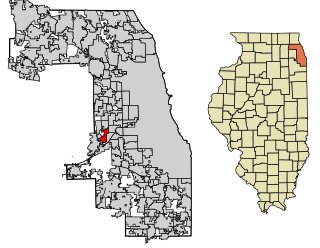
Countryside is a city in Cook County, Illinois, United States. Per the 2020 census, the population was 6,420.

Forest View is a village in Cook County, Illinois, United States. Per the 2020 census, the population was 792. It is primarily an industrial corridor adjacent to the Chicago neighborhood of Garfield Ridge, which is on the village's southern border.
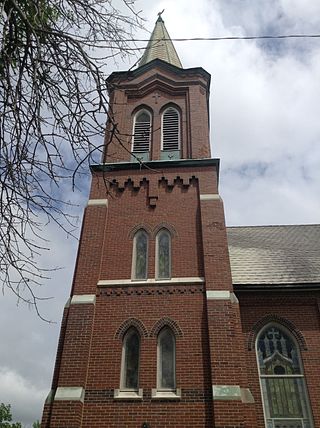
Frankfort is a village in Will County and Cook County in the U.S. state of Illinois. It is a southern suburb of Chicago, and is approximately 28 miles south of the city. As of the 2020 census, the population was 20,296.

Glenwood is a village in Cook County, Illinois, United States. The population was 8,662 at the 2020 census.

Golf is a village in Cook County, Illinois, United States, incorporated in 1928. As of the 2020 census, the village had a population of 514. The community is primarily residential, and has a dedicated police department, post office, and Metra train stop.

Hickory Hills is a city in Cook County, Illinois. Located principally in Palos Township, it is a suburb of Chicago. The population in 2020 was 14,505.

La Grange Park is a village in Cook County, Illinois, United States. According to the 2020 census, the population was 13,475.
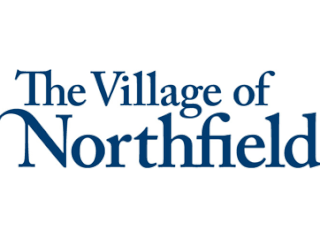
Northfield is a village in Cook County, Illinois, United States, located approximately 19 miles (31 km) north of downtown Chicago. As of the 2020 census, the village's population was 5,751. It is part of a collection of upscale residential communities north of Chicago that belong to New Trier and Northfield Townships and the greater North Shore.

River Forest is a suburban village adjacent to Chicago in Cook County, Illinois, United States. Per the 2020 census, the population was 11,717. Two universities make their home in River Forest, Dominican University and Concordia University Chicago. The village is closely tied to the larger neighboring community of Oak Park. There are significant architectural designs located in River Forest such as the Winslow House by Frank Lloyd Wright. River Forest has a railroad station with service to Chicago on Metra's Union Pacific West Line.

Summit is a village in Cook County, Illinois, United States. The population was 11,161 at the 2020 census. The name Summit, in use since 1836, refers to the highest point on the Chicago Portage between the northeast-flowing Chicago River and the southwest-flowing Des Plaines River located just north of the village.

Wheeling is a village in Cook and Lake counties in the U.S. state of Illinois. A suburb of Chicago, it is primarily in Cook County, approximately 23 mi (37 km) northwest of downtown Chicago. Per the 2020 census, the population was 39,137. Wheeling is named after Wheeling, West Virginia.

Willow Springs is a village in Cook County, Illinois, with a small portion in DuPage County. The village was founded in 1892, and was named for the springs along the Des Plaines River. In 2020, the population was 5,857.
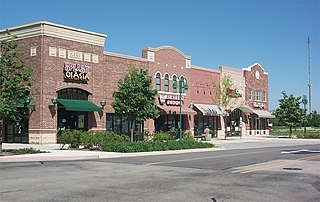
Woodridge is a village in DuPage County, Illinois, with small portions in Will and Cook counties, and a southwestern suburb of Chicago. Per the 2020 census, the population was 34,158.

Joliet is a city in Will and Kendall counties in the U.S. state of Illinois, 35 miles (56 km) southwest of Chicago. It is the county seat of Will County. It had a population of 150,362 at the 2020 census, making it the third-most populous city in Illinois.
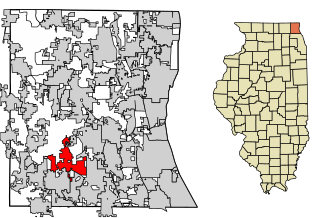
Hawthorn Woods is a village in Fremont and Ela townships in Lake County, Illinois, United States. Per the 2020 census, the population was 9,062. The village is located approximately 40 miles (60 km) northwest of downtown Chicago. Hawthorn Woods was officially incorporated in 1958. Major transportation arteries include Midlothian Road, Old McHenry Road, Algonquin Road, Half Day Road, and the Elgin, Joliet and Eastern Railway. Hawthorn Woods Country Club, whose golf course was designed by golf professional Arnold Palmer, is located within the village's perimeter.
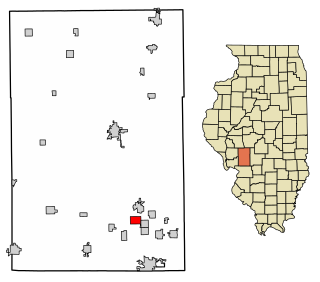
Mount Clare is a village in Macoupin County, Illinois, United States. Its population was 311 at the 2020 census.

Hebron is a village in McHenry County, Illinois, United States. It is a commuter village within the Chicago metropolitan area. Per the 2020 census, the population was 1,368. It is also the headquarters of Vaughan Manufacturing, one of the largest manufacturers of striking tools in the world.

Lyons Township is one of 29 townships in Cook County, Illinois. As of the 2020 census, its population was 115,105, with its most populous municipalities including La Grange, Justice and Summit. Lyons Township was established in 1850. The village of Lyons, almost all of which lies within the township, is often confused with it.
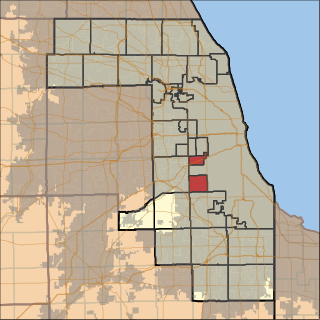
Stickney Township is one of 29 townships in Cook County, Illinois. As of the 2020 census, its population was 41,514, with approximately 71% of that total living in the city of Burbank.



